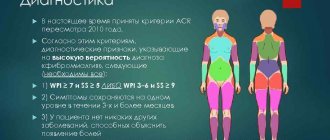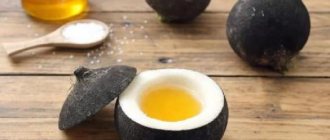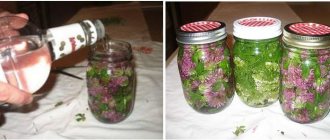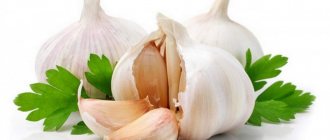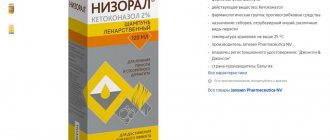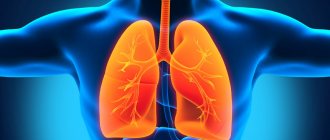Lactostasis is stagnation of milk or, in other words, a milk plug in one of the breast segments. It occurs due to incomplete emptying of the ducts during breastfeeding and is accompanied by unpleasant symptoms. It is more common in women who have given birth for the first time. We will talk about the causes of the symptom, prevention and treatment methods.
Causes of lactostasis
Symptoms of lactostasis in women
Medical assistance for lactostasis
How to distinguish lactostasis from mastitis
Prevention of lactostasis in women
Lactostasis (milk stagnation) in a nursing mother
Lactostasis is the stagnation of milk in the ducts of the mammary gland that occurs in a nursing mother during breastfeeding.
The term "Lactostasis" comes from the Latin word lac (lactis), which means milk, and the Greek stasis - stopping, difficulty, stagnation, standing, slowing down
According to statistics, lactostasis occurs in at least a third of all nursing mothers on the planet. According to the survey, almost all women experience temporary disruption of milk flow during breastfeeding.
Lactostasis is associated with a quantitative imbalance in the synthesis of milk by the mammary glands and its excretion through the nipple, while the volume of milk produced is always greater than the amount excreted.
Milk production occurs in special epithelial cells, the smallest community of which is called the lacteal lobule. The lobules are combined into lobes (segments), and 15-20 lobes form the mammary gland as a whole. Milk is released through a system of milk ducts of small, medium and large caliber. The small-caliber ducts are lobular, with a minimal lumen diameter, and unite into the middle lobar excretory tracts. These, in turn, form large milky passages that open at the top of the nipple.
The well-being of lactation depends on a number of factors
First, the cells in which milk synthesis occurs are surrounded by a layer of tissue containing muscle fibers. This is an extremely important factor, since it is the contractions and microvibration of these fibers that push milk out of the cells, move it along the ducts and ensure reflex release in the nipple area.
Secondly, an adequate diameter of the lumen of the excretory tract is necessary. After childbirth and the beginning of lactation, there is often a relative narrowness and tortuosity of the milk ducts, a discrepancy between the production of secreting cells and the capabilities of the excretory pathways. From feeding to feeding, this initial lack of development of the excretory system of the mammary gland is eliminated, but under the appropriate unfavorable circumstances, lactostasis may occur in the first 4-5 days of lactation.
Causes of milk stagnation during breastfeeding
Lactostasis occurs when, for some reason, the movement of milk through ducts of smaller or larger caliber to the nipple slows down and stops. In such cases, the displaced fluid accumulates to the point of obstruction and can put pressure on adjacent outflow tracts, as well as on secreting cells, microvessels and nerve fibers. Compression of neighboring, previously passable, milk ducts involves them in lactostasis, leading to an increase in the scale and progression of the process. Compression of arterial microvessels leads to a lack of supply of oxygen and substances necessary for milk synthesis to the secreting cells. The pressing effect on the venous and lymphatic capillaries inhibits the removal of carbon dioxide and toxic metabolic products, which also reduces the formation of milk. Compression of nerve fibers disrupts the regulation of the biosynthesis process in the secreting cells of the mammary gland. Thus, stagnation of milk in the breast becomes the cause of further lactation disorders, leading to a constant decrease in the amount of milk and a deterioration in the well-being of the nursing mother, and also jeopardizes breastfeeding of the child.
In addition, compression of the milk ducts, microvessels and nerve formations leads to the development of complications and consequences of lactostasis - inflammation and swelling of the affected segment of the mammary gland - mastitis.
As a result, the causes of lactostasis are factors that disrupt the outflow of milk.
These factors include a number of situations:
- increased viscosity of colostrum and intermediate milk in the first days after birth;
- insufficient breast emptying and infrequent feedings;
- feeding in the same position;
- improper attachment to the breast;
- unreasonable frequent pumping;
- abrupt cessation of breastfeeding;
- chest injuries;
- congenital and acquired anomalies of the structure of the mammary glands;
- hypothermia,
- overwork, including mental
- habit of sleeping on your stomach, tight bra, etc.
- Increased viscosity of colostrum and intermediate milk in the first days after birth. The formation and secretion of colostrum, rather than milk, is typical for the first days after childbirth. Colostrum has greater density and viscosity compared to mature milk. In the next three to four days, intermediate milk appears, the specific gravity of which is also higher than that of mature milk. This is combined with the undeveloped and narrowness of the milk ducts and physiologically increased lactation. The formation of mature milk begins only on the 5th day after birth, and until this moment, in a woman who has given birth, the narrowness of the ducts is combined with the high viscosity of colostrum or intermediate milk. This leads to a low linear speed of movement and their delay in the outflow tract. Thus, in combination with physiologically increased lactation, real prerequisites for blockage of the milk ducts appear.
- Lactostasis can also be caused by insufficient breast emptying . It becomes possible when feeding weakened children, or with “regulated” or rare feeding , when the mother breastfeeds the baby no more than 6-8 times a day, since she is convinced of the need to limit food intake over time, creating a so-called “diet regimen.” Stagnation of milk in the breast occurs because unclaimed milk in itself is an obstacle to the outflow of newly formed portions. Currently, this approach is not supported by experts. On the contrary, “on demand” feedings are recommended.
- Feeding in the same position is often accompanied by complete consumption of milk in some segments of the mammary glands and its retention in others, which can also disrupt the outflow of milk.
- Another reason for the development of lactostasis is improper breastfeeding. To completely empty the mammary gland, the baby's mouth must completely grasp the nipple and areola. If this does not happen, then some of the milk remains in the ducts and there is a possibility of blockage. Quite often, when feeding, mothers use this technique (it is called “scissors”): the nipple is fixed between the index and middle fingers, remaining compressed during the entire sucking time. This is done to help the baby hold the nipple. But at the same time, compression of the excretory ducts occurs with the possibility of stagnation of milk in them.
- One of the reasons for milk retention is unreasonable frequent pumping . Frequent pumping is not always recommended for nursing mothers, but only in cases where, firstly, lactostasis has already occurred; secondly, little milk is produced, and pumping is a lactation stimulator; thirdly, with increased milk production. If none of the above is observed, then frequent pumping loses its positive meaning and transforms into factors causing lactostasis. Pumping is a stimulator of lactation (see above), and frequent pumping is a stimulator of increased lactation. The following chain of events unfolds: unreasonable frequent pumping results in an increased volume of milk. This volume is not sucked out by the child and is expressed again. A new increased volume is formed again. Ultimately, the volume of milk always exceeds the volume of the ducts, or, in other words, with frequent pumping, there is always a relative narrowness of the milk outflow paths, the amount of which exceeds their functionality. Excessive milk volume is an obstacle to the outflow of new portions. In addition, the ducts dilated by the increased amount of milk put pressure on the neighboring ones. A violation of the patency of the outflow tract is formed due to compression from the outside and the appearance of an obstacle from the inside. As a result, stagnation of milk occurs in the mammary gland.
- An abrupt cessation of breastfeeding may be due to the child’s refusal to take the breast, premature weaning, or transfer to artificial nutrition. In any of the listed cases, the retention of milk in the excretory system of the mammary gland is associated with the cessation of its outflow due to lack of demand.
- The cause of milk stagnation is spasm (narrowing) of the mammary gland ducts as a result of low temperatures . Spasms - a standard response to cold - reduces the diameter of the lumen of the ducts, limits their throughput and leads to the formation of lactostasis.
- Cold is not the only reason for a decrease in the diameter of the lumen of the milk ducts due to spasm. Psycho-emotional stress, negative emotions and fears (the so-called psychosomatics ) , lack of sleep, increased physical activity, which are inevitably associated with caring for a child and breastfeeding, are also powerful spasmodic factors, the action of which can cause stagnation of milk in the breast.
- The harmless habit of sleeping on the stomach while breastfeeding becomes a risk factor in terms of the development of lactostasis due to prolonged compression of the gland tissue and its milk outflow system. A tight bra has the same negative effect on lactation .
Preventive actions
Prevention of lactostasis involves the nursing mother following several recommendations. The baby should be fed regularly (but no more than once every two hours), and any remaining milk should be carefully expressed using a manual or automatic breast pump.
You should avoid wearing tight underwear. Limiting physical activity and stress during lactation significantly reduces the likelihood of lactostasis. An important role is played by the diet - it must include fresh vegetables and fruits.
If symptoms of lactostasis appear, you should not stop feeding your baby. If there is a prolonged delay in milk flow, you should consult a doctor. Self-administration of any medications is not recommended. It should be borne in mind that the affected mammary gland after recovery may produce less milk. Over time, secretory function will be restored in full.
Symptoms of lactostasis in nursing mothers
A delay in the outflow of milk leads to its accumulation in one of the areas of the mammary gland. The affected area increases in volume and becomes denser. In the early stages, such a compaction is detected only by palpation, i.e. by palpation, which allows you to recognize stagnation of milk. Subsequently, the size of the compaction increases, the surrounding tissues are compressed, and swelling forms.
A nursing woman complains of a general deterioration in health, malaise and weakness, chills, headaches, the appearance of a painful lump in the breast area, increased pain during feeding and, associated with this, the ineffectiveness of feeding itself.
Upon examination, swelling, engorgement, and redness of the affected area are detected by palpation (by palpation) and visible to the eye. Also, palpation reveals pain in the area. The skin over the affected segment is dense, stretched, inelastic, and hot to the touch. Low-grade fever with an increase in body temperature to 37.4-37.5 ° C is noted.
How to distinguish lactostasis from mastitis?
A complication and consequence of prolonged lactostasis is lactation mastitis - inflammation of the breast tissue.
There are non-infectious and infectious lactation mastitis. The latter develops under conditions of inclusion of pathogenic microflora, most often staphylococcal, in the process. The pathogen infects the ducts and tissue of the mammary gland, entering them through cracks in the nipples, during breastfeeding, and expressing milk.
Manifestations of lactation mastitis correspond to local and general manifestations of inflammation. Local reactions were described by Hippocrates: redness (rubor), swelling (tumor), local increase in temperature (calor), pain (dolor), dysfunction (function laesae).
General symptoms include decreased ability to work, malaise, headaches, chills, temperature up to 38.0-39.5°C, changes in the cellular composition of the blood.
All these manifestations in general are similar to those for lactostasis, but are expressed to a much greater extent. For example, the temperature with lactostasis (uncomplicated) does not rise above 37.4-37.6 ° C, and with mastitis it is much higher; deviations in the general blood test are absent in cases of banal milk stagnation and are very pronounced in conditions of lactation mastitis. If in the treatment of lactostasis in nursing mothers the central measure is expressing milk at home, then lactation mastitis requires complex conservative therapy, and in some cases, surgical intervention.
In order to distinguish between lactostasis and lactation mastitis, a general blood test, bacteriological examination of breast discharge from the nipples, and ultrasound examination may be prescribed.
In a general blood test of patients with lactation mastitis, there are nonspecific signs of an inflammatory reaction that are not characteristic of lactostasis (see table).
Bacteriological examination reveals contamination with pathogenic microflora in discharged pus or milk, which is absent in cases of banal lactostasis.
Ultrasound examination makes it possible to assess the origin of the lump, provides an answer to the question “Mastitis or lactostasis?”, and also distinguishes between individual forms of lactational mastitis, which is a determining factor in choosing treatment tactics.
The main differences between lactostasis and lactation mastitis are shown in the table:
| Manifestations of the disease | Lactostasis | Lactation mastitis |
| General state | Suffers less | Weakness, chills, migraine. Nausea and vomiting are possible. |
| Improvement after pumping | Significant | Absent |
| Temperature response | up to 37.4-37.6oC | up to 38.0-39.5oC Temperature fluctuations are possible |
| Temperature difference in the armpits | Higher in the one located next to the affected gland | No difference or small |
| Normalization of temperature after pumping | Eat | Absent |
| Discharge of pus from the nipples, mucus and pus in the milk | No | Eat |
| General blood analysis | No violations | Leukocytosis > 9.00x109/l Neutrophilia > 75% ESR > 20 mm/hour |
| Bacteriological examination of milk from both glands | No violations | Contamination with pathogenic microflora |
| Cytological examination of milk | No violations | Presence of red blood cells |
Which doctor should I contact if I have lactostasis?
In such cases, it is best to immediately contact a surgeon who will advise you about both lactostasis and mastitis. You can also get examined by an obstetrician-gynecologist.
Specialists practicing in the field of mammology or pediatrics have completely different areas of activity. For example, a mammologist deals with oncological diseases of the mammary glands, a pediatrician deals with childhood diseases.
Prevention
Any disease is easier to prevent than to treat. There are several ways to help reduce the risk of developing lactostasis to 5%.
- Prevent cracked nipples. To do this, you need to properly attach the baby and prepare the nipples for feeding. Cracks appear in almost all women who put children to their breasts for the first time. If you could not avoid them, then you need to start treatment in a timely manner.
- Wear comfortable underwear. Give preference to soft bras that do not compress your breasts. Be sure to choose them according to your parameters - models that are too spacious or narrow can injure the gland.
- Feed your baby on demand. Don't try to create a clear schedule, trust nature.
- Eat right and remember to drink enough fluids. This will help improve lactation and strengthen the body of a nursing mother.
- Try to avoid stress and rest more often. After giving birth, you need to restore your strength, try not to argue with your household and not panic over trifles.
It is important to establish proper lactation so that enough milk is produced so that the baby has enough of it, and there is no excess left in the breast. This is a very delicate process with which professionals will help you. Due to the heavy workload of maternity hospitals, young mothers are practically not taught how to breastfeed their children. This leads to the fact that they apply it incorrectly and make many other mistakes, leading to stagnation of milk and infectious mastitis.
What to do when a nursing mother has stagnant milk? Treatment of lactostasis
If a nursing mother has signs of milk stagnation in the mammary gland, then you can consult a surgeon. If the stagnation is not complicated by a secondary infection and there is no fever, then you will be recommended:
- Continue breastfeeding on demand.
- Prepare your breasts in a special way for the next feeding.
- Eliminate all possible causes of lactostasis (see Causes of milk stagnation during breastfeeding). This breast preparation is a central therapeutic measure in order to combat and cope with lactostasis. It consists of mandatory pumping before each application to the breast.
- In addition, you will be recommended breast massage and physiotherapy for lactostasis (see below).
Complication
The most severe complication of lactostasis is mastitis - inflammation of the breast tissue. Patients experience increasing pain syndrome. Later it is accompanied by fever and increased temperature in the affected area. The skin of the mammary glands becomes covered with red stripes. Milk contains impurities of blood and purulent discharge.
The occurrence of mastitis is promoted by hypothermia (lactation in a cool room or in a draft) or overheating (hot shower, sauna) of the patient. Advanced lactostasis, complicated by mastitis, often causes the formation of a breast abscess.
Treatment of lactostasis at home
The main help for lactostasis and treatment is carried out at home - these are mandatory pumping and massage.
Highly effective phonation using the Vitafon medical device, which can also be performed at home. In 1997, the effectiveness of this device for the treatment of lactostasis and serous mastitis was confirmed by the Research Institute of Obstetrics and Gynecology named after. BEFORE. OTTA ().
We bring to your attention a video review of a doctor of the highest category, candidate of medical sciences, associate professor of the Department of Pediatrics of Northwestern State Medical University named after. Mechnikova (St. Petersburg) F.N. Ryabchuk on the use of the Vitafon device for lactostasis and serous mastitis.
As a complement to these methods, it is possible to use some folk remedies: compresses with cabbage leaves and honey.
How to strain milk stagnation?
Expressing is necessary in order to restore the patency of the milk ducts and remove stagnation of breast milk in the affected breast lobule.
How to prepare for pumping? On the first day of the appearance of signs of lactostasis in a nursing mother, thermal exposure to the breast is permissible - a warm heating pad, a warm shower, but only on the first day. If during the first day it was not possible to resolve lactostasis, then heat should not be used in the following days.
You need to take a comfortable position - lying on a sofa or couch. Be sure to calm down. Anxiety can cause spasm of the milk ducts.
How to properly strain stagnant milk by hand at home?
For proper pumping, you need to place the congestive mammary gland (breast) on the palm of your hand (for the right breast - the right palm, for the left - the left). Slightly lift your chest with your palm and massage your chest for 5-15 minutes (see Breast massage). The appearance of first drops of milk, and then streams, indicates the restoration of the patency of the milky passages.
After this, you can proceed to pumping. To do this, the thumb and index fingers need to be positioned along the edges of the areola (parapapillary circle). Using these fingers, make gentle pressing movements from the surface inward and from the edge of the areola to the nipple. This is a rather long procedure lasting up to 30-40-60 minutes. But manual massage is more gentle than expressing with a breast pump.
Using a breast pump for expressing is very convenient and effective. This speeds up the process, and the pain will be less intense.
Finish the pumping procedure when the softness and elasticity of the breast and nipple are restored - signs of unloading of stagnation. The use of a breast pump is contraindicated if there are cracked nipples.
After decanting, you can proceed directly to feeding. First of all, give your baby the sore breast. A hungry baby will suck the maximum amount of milk from her. Position your child so that his chin rests directly on the hardened area. When sucking, the movements of the chin will push the milk out of the stagnation area. Do not feed from time to time in the same position, because... the monotonous position of your body is one of the likely causes of lactostasis. Once your baby is full, express the remaining milk again.
It is very important to know that it is permissible to independently combat milk stagnation only in the first two days, especially if there is an increase in temperature due to lactostasis.
Elevated temperature during lactostasis is associated with the accumulation of milk in a stagnant lobule or lobules and its absorption into the blood. Therefore, a radical antipyretic treatment for stagnation of milk during breastfeeding will be complete emptying of the breast. Medications will only have a temporary effect. Among them, for nursing mothers it is possible to use drugs of the paracetamol group, but only as prescribed by a doctor.
Your doctor will advise you on further steps to remove stagnation of breast milk.
First aid or physical therapy
Physiotherapy for lactostasis is carried out using the phonation method using the Vitafon medical device.
The method is based on the effect of low-frequency mechanical microvibration on tissue.
Stagnation of milk in a nursing mother occurs due to the appearance of a real obstacle in the outflow tract. This obstacle consists of several components:
- reduction in the diameter of the milk ducts;
- edema;
- the accumulated milk itself.
A decrease in lumen diameter is a triggering factor, the reasons for which are described at the beginning of the article. Edema occurs when the volume of non-flowing milk begins to compress microvessels of any profile - arterial, venous, lymphatic. Blood is retained above the obstruction site and overstretches the vascular wall. The permeability of the wall increases and the liquid part of the blood - plasma - passes into the tissues. An increase in the amount of tissue fluid is edema. An increase in the volume of tissue (edematous) fluid increases compression on the milk ducts and blood vessels, milk and blood retention increases, and all disorders develop further. A vicious circle is formed, with each successive revolution of which the manifestations of lactostasis and accompanying microcirculation disorders deepen more and more. If infection also occurs, then lactostasis is complicated by lactation mastitis.
The main goal of therapy in such cases is to break pathological cause-and-effect relationships anywhere in the vicious circle and cure lactostasis.
Normally, the movement of milk through the milk ducts is ensured by contractions of the muscle fibers of the mammary gland, and the lymphatic system is responsible for removing excess tissue fluid. But with lactostasis, both muscle fibers and lymphatic microvessels are pinched by edema and stagnant milk, so this function is not fulfilled and falls out.
Vibroacoustic therapy with the Vitafon apparatus (phonation) destroys the pathological chain of events and radically eliminates stagnation of milk in the mammary gland by replenishing the lack of tissue microvibration levels, restoring the condition of the muscle cells of the gland and the walls of microvessels, as well as cleaning the tissue from damaged cells.
After phonation the following are completely restored:
- movement of milk along the outflow tract,
- tone and permeability of vascular walls,
- the amount of tissue fluid, that is, all mechanisms and symptoms of lactostasis are completely eliminated.
In addition, vibroacoustic therapy has an anti-inflammatory effect and strengthens local immunity. Therefore, simultaneously with the elimination of milk stagnation in a nursing mother, Vitafon provides the safest and most reliable prevention of lactation mastitis.
Phonics is absolutely painless, non-traumatic and easily tolerated, and also has a small list of contraindications.
Vitafon is used both in medical and preventive institutions and outside them. Thus, with the help of the device you can provide radical help with lactostasis at home. Carry out 4 phonation procedures per day until the symptoms disappear and then for another 2 days. More details on the phonation technique can be found here.
With a review from the Research Institute of Obstetrics and Gynecology named after. BEFORE. OTTA on the use of the Vitafon medical vibroacoustic device in the treatment of lactostasis can be found here. The result of using Vitafon was that it was possible to express the mammary glands within 6-8 hours.
Breast massage
Breast massage has proven itself to be effective for milk stagnation. You can do it at home yourself as much as you need. There is no harm to the baby. Massage should be done before pumping or feeding, as well as after feeding. Massage time is 5-15 minutes.
How to massage with lactostasis?
Before starting, lightly grease your hands and chest with vegetable oil. Then place the sore breast on your palm. Raise your palm up and slightly to the side and your chest also rises slightly. In this position, the milk ducts open in the nipple area. With your free hand, using soft circular, enveloping movements, lightly stroke and at the same time press on the breast (Fig. No. 1), starting from the top and moving towards the nipple (Fig. 2 and 3).
After some time, we change the nature of the movements. Now, using your thumb and forefinger, gently massage the areola from top to bottom and from outside to inside.
We alternate circular movements and areola massage. Add gentle tapping on the chest with your fingertips. You can also bend over and shake your chest a little. Milk gradually begins to come out, first drop by drop, then in a trickle. Only now can you move on to pumping or feeding.
Treatment with folk remedies
Traditional medicine over several thousand years has accumulated a huge number of recommendations and recipes for the prevention and treatment of various diseases.
On the one hand, we would be very unreasonable creatures if we abandoned the experience of the healers of the past, proven over decades and centuries. On the other hand, many traditional medicines do not have any evidence base or scientific basis for their effectiveness and can be harmful and even dangerous to health. One of the main dangers is to rely on them and miss the time for timely and effective treatment. The price of such mistakes is the development of severe complications and irreversible consequences, including deprivation of the child's mother's milk.
It is believed that the main folk remedies to get rid of lactostasis in a nursing mother are cabbage leaves and honey. They are often used for milk stagnation in nursing women due to their supposed decongestant properties. Such recommendations can be heard even from midwives. Indeed, relieving edema frees the milk ducts from compression and normalizes their throughput, but it should be remembered that the use of folk remedies is an additional measure and does not cancel the main measures, such as pumping, Vitafon treatment and massage.
Symptoms of non-lactation mastitis
Non-lactation mastitis is characterized by a relatively slow development (within 8-24 hours or more).
A symptom of non-lactation mastitis is the GRADUAL onset and INCREASE of pain in the mammary gland.
A symptom of mastitis is edema (swelling) and local redness of the skin (see photo).
As non-lactation mastitis progresses, the pain becomes permanent.
A symptom of mastitis is severe pain with any shaking of the body or touching the chest.
| Photo of mastitis. Acute non-lactational left-sided infiltrative mastitis |
How to apply cabbage leaf for lactostasis?
The main folk remedy for lactostasis is cabbage leaf. There are several recipes:
- In the evening, place a whole leaf of cabbage over the area with the seal, put a bra on top or wrap your chest with a bandage so that the leaf does not slip off, and leave until the morning. The next evening use a new sheet;
- Prepare the cabbage leaf as in option 1, but additionally grease it with a mixture of salt and oil. Replace several times a day;
- Knead the cabbage leaf thoroughly with your hands or a rolling pin or beat it off, you can make several superficial cuts so that the leaf releases juice, apply a compress to the sore spot, securing it with a bandage. Change every 3 hours.
Perhaps a cabbage leaf will help you, but perhaps not, if all your treatment consists only of cabbage leaves. Therefore, first of all, focus on the main measures for lactostasis: pumping, massage and phonation.
Honey compresses
Traditional medicine suggests treating stagnation of breast milk by using honey compresses. There are quite a lot of recipes for their preparation; there are several general rules that are recommended to be followed:
- honey should be natural and, preferably, May honey;
- use honey heated in a water bath at a temperature of approximately 40°C;
- Regardless of the preparation method, the applied compress is distributed on the skin, covered with cellophane and insulated with a scarf or handkerchief;
- the duration of action of the honey compress is 3 hours;
- a honey compress is not always convenient, because... honey leaks out and stains clothes.
- In essence, the variety of methods for honey compress is the variety of “fillings” for cellophane:
- cabbage leaf with honey for lactostasis - smear a cabbage leaf with honey and apply it to your chest. Or apply a clean sheet to pre-lubricated skin;
- Grind the cabbage leaf in a meat grinder or blender, mix with honey in a ratio of 5:1;
- honey cake for lactostasis - prepare the mixture using equal amounts of honey and flour (rye or wheat), form it into a cake and apply to the stagnant area;
Please note that there is no scientific justification for the use of this drug for the treatment of lactostasis and information about the proven effectiveness of its use. Therefore, the use of honey compresses can only be considered as an additional and not mandatory remedy.
Prevention or how to avoid lactostasis during breastfeeding.
In order to maintain normal milk flow throughout the entire feeding period and prevent lactostasis, you need to adhere to a lifestyle that eliminates all causes (conditions, situations) that could cause stagnation.
A list of reasons was given at the beginning of the article. It's worth using it. For example, if we know that “regulated” feeding can lead to incomplete emptying of the breast, it is better to refuse it. Let the baby suckle when he is hungry, and not strictly every 3-4 hours. Let one feeding take as much time as the child needs, and not the “legalized” 15 minutes that someone once allotted him for this. Modern science believes that this approach is more justified and useful for the growth and development of the baby than the desire for a rigid regime.
So, prevention of lactostasis during breastfeeding:
- Feeding “on demand” without time limit.
- Avoid feeding in the same position.
- Make sure your baby grasps the nipple correctly.
- Do not use scissor finger positions during feeding.
- If there is enough milk and there are no signs of stagnation, then do not express too often.
- Strictly follow the “order” of breasts, keep a record.
- When the time comes to wean your baby, do it gradually.
- Periodically conduct preventive courses using the Vitafon device. Phonation perfectly maintains the normal state of muscle cell tone in the breast tissue, the walls of the milk ducts and blood microvessels and prevents the retention of milk on the outflow paths.
- Don't let your chest get cold. This is a very well-known rule among the people. Take all measures to avoid getting a chest cold.
- Give up the habit of sleeping on your stomach.
- Provide yourself with loose, comfortable clothing that does not restrict your chest.
During the period of breastfeeding, psycho-emotional stress, lack of sleep, and increased physical activity become an integral part of your life. And they are the real conditions for lactostasis. Let your loved ones do everything to save you from the influence of this negative triad: help, take on some of the worries, give you additional time for sleep and rest.
Conclusion
In conclusion, here are some basic recommendations for mothers who breastfeed their baby.
- Carefully analyze your lifestyle and immediately eliminate from it all potential causes of milk stagnation during breastfeeding. Carry out preventive procedures with the Vitafon device, preventing not only lactostasis, but also increasing the overall immunity of the body.
- If lactostasis does develop, do not delay taking measures to combat it: do not stop feeding, use the Vitafon device, express and massage the mammary gland (breast).
- In difficult cases, do not forget about professional medical help.
Main! Make every effort to continue breastfeeding your baby. This way you will create the best conditions for maintaining his health, successful growth and development.
FAQ:
Will a camphor oil compress help?
Answer: camphor oil for external use is a 10% solution of camphor in sunflower oil. It is used for rubbing for muscle pain, arthritis, rheumatism, etc. Camphor oil has no indications for use in lactostasis, but it is known that camphor interferes with the production of breast milk. In addition, this oil has a characteristic pungent odor, due to which the baby may simply refuse to breastfeed, while feeding cannot be interrupted during treatment.
Can I use an alcohol compress?
Answer: no. Alcohol inhibits the formation of oxytocin, which in the body of a nursing mother stimulates the outflow of milk. We also must not forget that alcohol can get into the milk, and therefore into the child’s body.
Is magnesium compress allowed?
It is not recommended to use a magnesium compress for lactostasis, since there is no information about the proven effectiveness of its use. At the same time, magnesium sulfate (magnesia) is contraindicated for breastfeeding when taken orally; there is always a possibility that the drug may enter the baby’s body during breastfeeding.
Will a bath help with lactostasis?
Answer: a bath is an intense thermal effect, both local (on the chest) and general (on the entire body). With local heat applied to the breast, the milk ducts expand and when expressing (right there, in the bath), the outflow of milk is facilitated. However, trying pumping in a bathhouse is permissible only if no more than 2 days have passed since the onset of signs of milk stagnation in a nursing mother and lactostasis occurs without fever. But even if you go to the bathhouse on the first “allowed” two days and you do not have a fever, you should always remember that the bathing procedure can be complicated by uncontrolled milk secretion, which will be very difficult to stop.
Is it possible to make compresses for lactostasis and fever in a nursing woman?
Answer: no. Compresses for lactostasis have warming properties; you can do them yourself 1-2 days from the beginning and only in the absence of fever.
Is it possible to use dimexide for lactostasis?
The only answer can be unequivocal - no. A drug such as dimexide is prohibited in pediatric practice due to its toxicity. Treatment with dimexide for lactostasis of the skin of the breast in a nursing mother leads to the entry of this substance into the child’s body and the implementation of its toxic effects.
How long does lactostasis last?
The duration ranges from one day to a week, then there is a possibility of lactostasis turning into serous mastitis.
Is no-spa used for lactostasis?
Indeed, no-shpa is sometimes used for milk stagnation, but it must be borne in mind that due to the lack of necessary clinical studies on the use of this drug during lactation, the use of no-shpa is not recommended.
How to break milk stagnation?
With lactostasis, in no case should you take any actions that could be characterized as hitting or breaking, as you can damage the mammary glands and greatly aggravate the situation. Only gentle massage and careful pumping are used.
I can’t express the stagnation of milk!
In response to this cry for help, a doctor must come. And before his arrival, you need to calm down and once again, after reading this article, make efforts, including with the help of your loved ones, to massage the breasts, pump, feed the baby and use phonation.
List of used literature:
- Ailamazyan E.K. Obstetrics: textbook. – Moscow State Medical University named after. THEM. Sechenov. – 9th edition, revised and expanded – Moscow: GOETAR-Media. – 2015
- Kildiyarova R.R. Nutrition for a healthy child. – 2nd edition, corrected and expanded – Moscow: GOETAR-Media. – 2015
- Kildiyarova R.R., Kolesnikova M.B. Pediatrician's Directory. – 3rd edition, corrected and expanded – Moscow: GOETAR-Media. – 2015
- Komarova T.A., Tulendiev T.V. A textbook of traditional medicine – Alma-Ata Publishing House: Kainar. – 1991
- Horse I.Ya. Nutrition for pregnant women, nursing mothers and young children. – Publishing house Medical Information Agency (MIA). – 2015
- Kostenko A. Smart herbs for your health. – AST Publishing House. – 2015
- Nikitin B.P. A healthy childhood without drugs or vaccinations. 6th edition, corrected and expanded - Publisher: List New Year. – 2001
- Pediatrics: national guidelines. – Moscow: GOETAR-Media, 2009
- Pediatrics - a textbook for medical universities / Edited by N.P. Shabalova. - Saint Petersburg. – 2003
- Pervushina E.N. Forest pharmacy. Medicinal plants. – Amphora Publishing House. – 2015
- Radzinsky V.E. Gynecology: textbook. – GOETAR-Media. – 2015
- Yakovlev Ya.Ya., Manerov F.K. Lactostasis and lactation mastitis in pediatric practice // Siberian Medical Review. – 2015 – No. 2 (92) – pp. 32-41.
- Feedback from the Research Institute of Obstetrics and Gynecology named after. BEFORE. OTTA dated December 16, 1997 No. 218 on the use of the Vitafon vibroacoustic device in the treatment of lactostasis and serous mastitis.
Author of the article: Candidate of Medical Sciences, doctor of clinical laboratory diagnostics Ionicheva L.V. (Penza)
You can ask questions (below) on the topic of the article and we will try to answer them competently!
When inflammation in the chest has already begun
There is another option, when no obvious compaction can be felt, but there is pain and redness on the skin. This may be galactophoritis, that is, inflammation in the duct.
Redness over the sore area indicates the onset of inflammation. There is very little stagnant milk, and it is not in lobes, but in the duct.
Such inflammations are the most dangerous, because they develop unnoticed and do not immediately make themselves felt. Already in the first day after the problem is discovered, there may be altered milk: bright yellow, thick, like butter or jelly.
“Jelified milk” is also a sign of inflammation. This is no longer just stagnation of milk, we are talking about mastitis!
Normal lactostasis, when milk accumulates in the milk lobe, can turn into mastitis after 3 days. But they rarely last that long.
Another sign of inflammation may be increased body temperature. But quite often, intense heat accompanies stagnation from the moment it occurs. Because protein from milk enters the blood.
With inflammation, the temperature can stay at a little over 37. And this is just a bad symptom.
The temperature returns to normal within several hours or one day after the stagnant lobes are emptied.
Fever is not a contraindication to breastfeeding! And a child cannot be “poisoned” by milk if inflammatory processes have already begun. This is exactly what the World Health Organization has been trying to convey to doctors for 19 years in its manual “Mastitis. Causes and Management" (2000)!
But it can get much worse for mom if she stops feeding!
But first things first.
